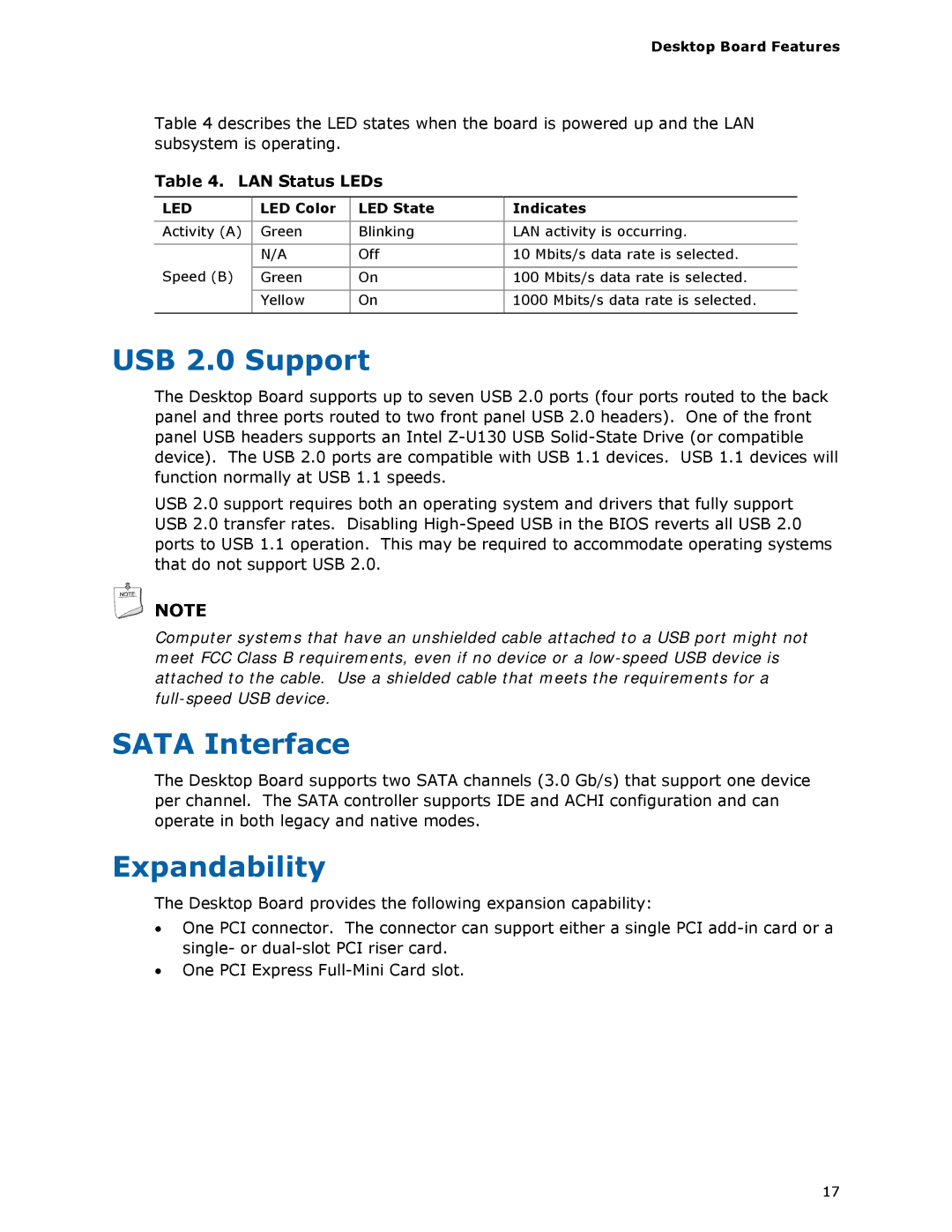Desktop Board Features
Table 4 describes the LED states when the board is powered up and the LAN subsystem is operating.
Table 4. LAN Status LEDs
LED | LED Color | LED State | Indicates |
|
|
|
|
Activity (A) | Green | Blinking | LAN activity is occurring. |
|
|
|
|
| N/A | Off | 10 Mbits/s data rate is selected. |
Speed (B) |
|
|
|
Green | On | 100 Mbits/s data rate is selected. | |
|
|
|
|
| Yellow | On | 1000 Mbits/s data rate is selected. |
|
|
|
|
USB 2.0 Support
The Desktop Board supports up to seven USB 2.0 ports (four ports routed to the back panel and three ports routed to two front panel USB 2.0 headers). One of the front panel USB headers supports an Intel
USB 2.0 support requires both an operating system and drivers that fully support USB 2.0 transfer rates. Disabling
![]() NOTE
NOTE
Computer systems that have an unshielded cable attached to a USB port might not meet FCC Class B requirements, even if no device or a
SATA Interface
The Desktop Board supports two SATA channels (3.0 Gb/s) that support one device per channel. The SATA controller supports IDE and ACHI configuration and can operate in both legacy and native modes.
Expandability
The Desktop Board provides the following expansion capability:
•One PCI connector. The connector can support either a single PCI
•One PCI Express
17
